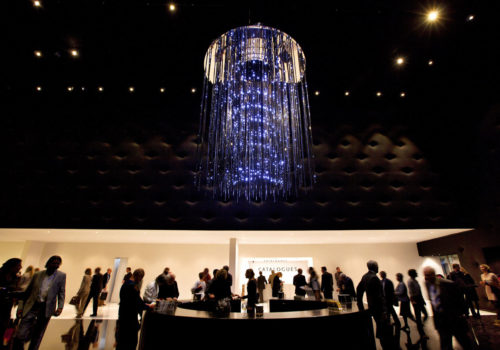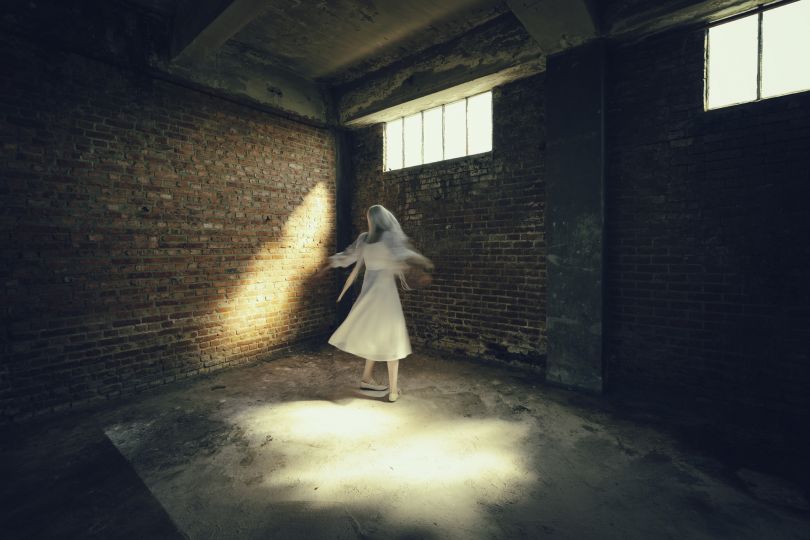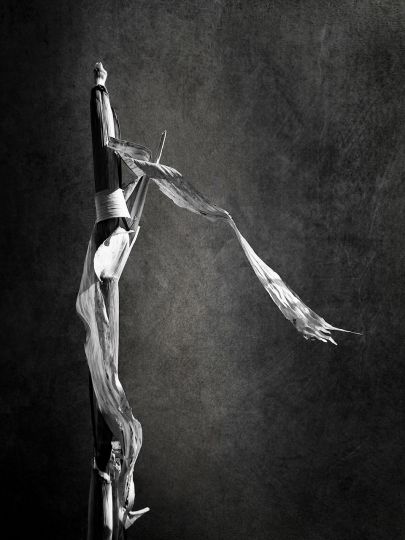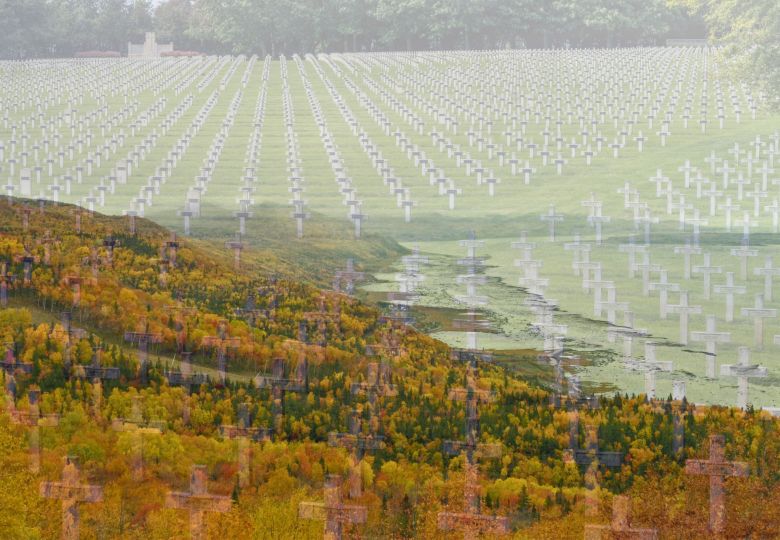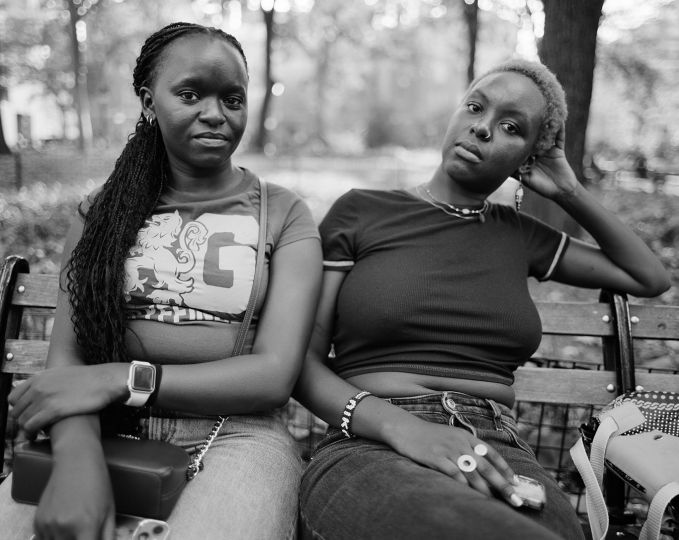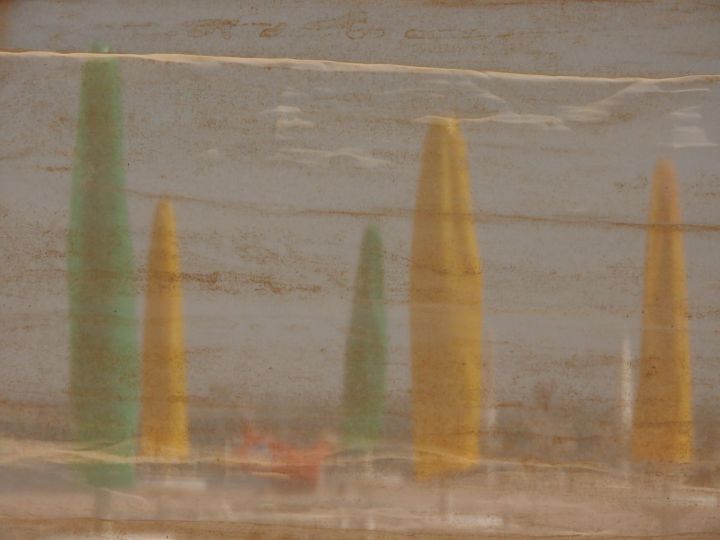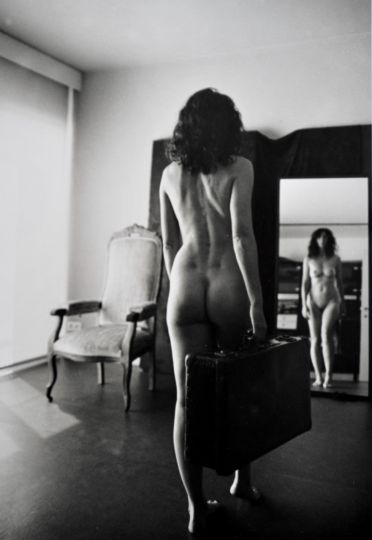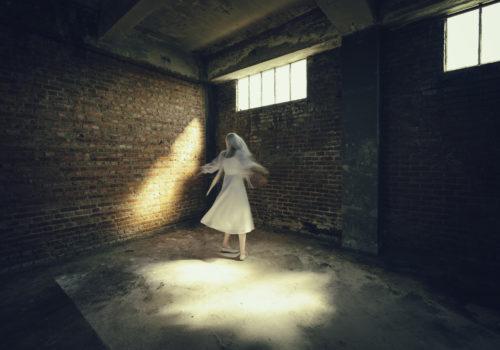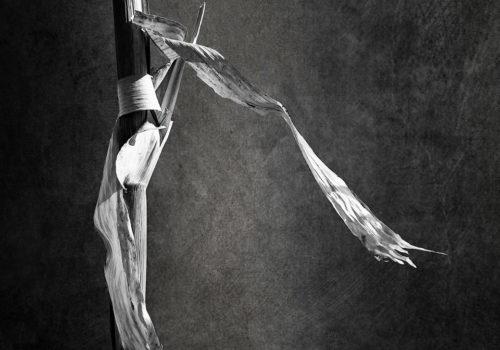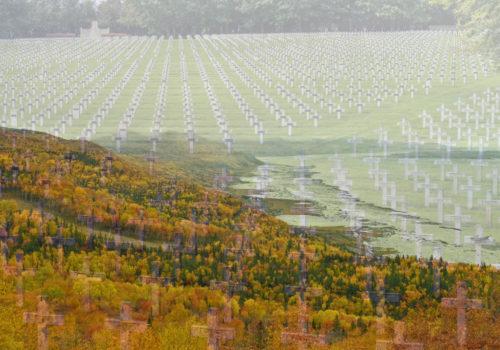TEFAF Maastricht is not the first place one would imagine shopping for fine art photography, although it is proclaimed the “world’s leading art and antiques fair.” There is no dedicated section for the medium and the handful of participating specialized galleries are dispersed among the “modern” and newer “paper” sections without any real logic.
What draws collectors to TEFAF each year is the blue-chip artworks offered by 260 leading dealers from 16 countries. Through a vetting process, the fair guarantees the quality, authenticity and condition of every object on display during the ten day event. Offering works from a medium of multiples, photography dealers are confronted with novice questions and face the challenge of making their goods desirable to a crowd more acquainted with master paintings, sculptures or fine jewelry.
Johannes Faber (Vienna, Austria) concedes that new clients often take time to finalize their purchases at TEFAF, as they need to grapple with the concept of vintage versus contemporary prints. In this light, provenance becomes a key element in the market value of a photograph. A series of early nude studies of Anita Brenner (1925) by Edward Weston presented on Faber’s stand was a gift from the photographer to the sitter. This provides the suite perfect pedigree. Other prints on show include vintage works by Heinrich Kuhn, Josef Sudek, and a singular example of Rudolf Koppitz’s famous movement study. Faber ironically admits that this print, at 155,000 euros, seems inexpensive to a clientele accustomed to seven-digit price tags.
Hamilton’s (London, England) makes a remarked presence this year pulling together a tight iconic selection of prints by three modern masters : Irving Penn, Richard Avedon and Helmut Newton. Prowling through the booth, a black box in which only the photographs are illuminated, one discovers fine examples of platinum prints by Penn and wall-sized gelatin silver prints by Avedon and Newton. Among the works by Penn, two variations of his famous Cuzco children (one large platinum, one smaller silver print) demonstrate how subtle differences in the pose (the joining of hands, the facial expressions or the position of their feet) and the choice of the printing process can transform one sitting into two distinct works of art. Most of the images on display are from sold-out editions. Rarity becomes another factor which determines whether a photographic print can be equated to fine art. Oversize prints of Dovima with the Elephants or Stephanie Seymour (no longer available in the smaller edition of 25) are ultimate examples of Avedon’s craft and should be snapped up in a market where size is a valued commodity. Two of Newton’s Big Nude prints also have pride of place in this intimate booth, where the only splash of color is provided by a large bouquet of purple orchids. True to his reputation, there is only one word to describe Tim Jeffries’ stand : “sexy”. Every print on the wall is desirable.
Jörg Maaß Kunsthandel‘s (Berlin, Germany) idea of sexy is pairing an Avedon print of Nastassia Kinski and the Serpent with woodcuts by Erich Heckel or Karl Schmidt Rottluff and a black chalk drawing of a sleeping woman by Louis Legrand. On another wall a Brassaï nude hovers over an ink drawing by George Grosz. Prints by Bill Brandt, Lotte Jacobi and a Cindy Sherman “film still” pepper the stand composed exclusively of works on paper. These associations are aesthetically convincing and will hopefully help TEFAF visitors cross over to photography.
By incorporating sculpture, Kicken Berlin (Germany) takes the art of juxtaposing photography with other media to another level. This demonstrates to potential collectors that works of art of different natures can cohesively and harmoniously co-exist in the same space. A Neil Selkirk print of Diane Arbus’ Headless Man, NYC (1962) takes on a new dimension when hung alongside Mathieu Mercier’s Untitled metal, gum and leather face mask (2003). One can imagine the skull in Dieter Appelt’s photograph fitting inside a bronze Greek helmet from the 6th-4th centuries BC. And a Hans Arp sculpture placed beneath an image by Brancusi makes as much sense historically as it does to the eye. Kicken is as adept in his choice of classic nudes as he is in selecting eclectic prints by Erwin Blumenfeld, Man Ray, Jaromir Funke or Andy Warhol, which will appeal to the investor behind the collector. Sensuous bromoil and gum bichromate prints by pictorialists Heinrich Kuhn and Hans Watzek guarantee that aficionados of paintings and gravures will also be attracted to Kicken’s stand.
Wandering through the “modern” section, one is confronted with wall size contemporary prints by Candida Hoffer (Kukje Gallery, Seoul, Korea and Ben Brown Fine Arts, London, UK) or Vik Muniz (also at Ben Brown). Work from the 1960s and 1970s by Peter Hutchinson, Hamish Fulton or Billy Apple, which incorporate photography, can be viewed in The Mayor Gallery’s booth (London, UK). Pieces by Gilbert & George are on display at Galerie Odermatt-Vedovi (Brussels, Belgium) and Sperone Westwater (New York, USA).
Daniel Blau (Munich, Germany) presents a small group of photographs among other offerings. Although classic in style, these architectural studies by James Anderson, Edouard Baldus, Bisson Frères, Charles Clifford and Charles Marville will enchant clients looking for decorative objects with a history. These albumen prints are genuine antiques. Clifford’s view of Alhambra belongs in the category of exceptional objects one seeks at TEFAF.
With his careful selection of exquisite prints and negatives, Hans P. Kraus, Jr. (New York, USA) represents 19th-century photographic art and science at its best. Each print, rich in tonal quality, a pristine example of the work of each photographer, is enhanced by attentive lighting. Every framed object radiates like a gem. An introspective self-portrait by Edgar Degas sets the tone, followed by a strong group of Julia Margaret Cameron’s Victorian portraits. The rest of the stand is devoted to views of Italy. These include a stunning albumen print of Robert Macpherson’s View of Rome from the French Academy, with a fountain in the foreground full of dark reflections, and a large gum print of Venice by Heinrich Kuhn which one recalls from the last touring exhibit of the Austrian photographer. Only two copies of this print are known to exist. Celebrating his fourth year at Maastricht, Kraus has a knack for exhibiting prints of the absolute richest quality and top-notch condition. These particular specimens of fine art photography appeal to our expectation of beauty and, as the rarest of objects (as far as we know), are on a par with other unique works presented at the fair.
Christophe Lunn
Useful information:
The European Fine Art Fair, Maastricht (TEFAF)
MECC (Maastricht Exhibition and Congress Center)
Forum 100, Maastricht, Netherlands
Opening hours :
Friday, March 16th to March 25th, 2012 (25th edition)
Daily from 11:00 AM to 7:00 PM
Sunday, March 25th, from 11:00 AM to 6:00 PM
Fees :
€ 55,00 per adult, including catalogue
€ 90,00 two adults, including one catalogue
€ 110,00 season ticket, including one catalogue
€ 20,00 children age 12 to 18, catalogue not included
Free for children under 12 accompanied by an adult

